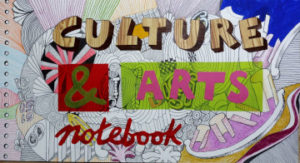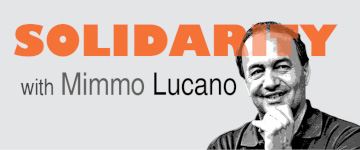We transmit to you the study “Some clues for nonviolence” carried out by Philippe Moal, in the form of 12 chapters. The general table of contents is as follows:
1- Where are we going?
2- The difficult transition from violence to nonviolence.
3- Prejudices which perpetuate violence.
4- Is there more or less violence than yesterday?
5- Spirals of violence
6- Disconnection, flight and hyper-connection (a) Disconnection.
7- Disconnection, flight and hyper-connection (b- Flight).
8- Disconnection, flight and hyper-connection (c- hyper-connection).
9- The different ways of rejecting violence.
10- The decisive role of consciousness.
11- Transformation or immobilisation.
12- Integrating and overcoming duality and Conclusion.
In the essay dated September 2021, the author expresses his thanks: : Thanks to their accurate vision of the subject, Martine Sicard, Jean-Luc Guérard, Maria del Carmen Gómez Moreno and Alicia Barrachina have given me precious help in the realisation of this work, both in the precision of terms and ideas, and I thank them warmly.
Here is the eleventh chapter:
Transformation or stasis
Let’s start with a hypothesis: “Transformation is one of our main faculties, if not one of our main raisons d’être. Consciousness, through its intentionality, is transforming the world and transforming itself, from birth to death, the last transformation by which its function is completed. Not transforming oneself means stopping along the way and settling for what has been acquired so far, it means resigning oneself to repeat. Having become masters in the transformation of matter, it remains for us to generate the subtlest, the intangible, the impalpable, that which frees us from temporal transformation, i.e., the spirit”.
More modestly, in this paper I propose avenues of reflection that can help to overcome violence. On a personal level, any transformation involves images that make the action more effective when they are combined: visual and kinesthetic.
The issue of kinesthetic images is fundamental, because if you have a visual image and you don’t have a corresponding kinesthetic register, it doesn’t move in the same way, that is, it is like an empty image, without substance… The visual image must be accompanied by a kinesthetic image with the corresponding register; the deeper it is, the better the charge moves[i].
When images are charged with violence, resentment, desire to possess, desire to control, thirst for revenge, hatred, dream of power…, they make people act in a direction that can only generate pain and suffering.
When images are charged with humiliation, submission, resignation, contradiction, they accumulate in oneself until they are unleashed in one’s environment and beyond, depending on one’s influence.
When images are loaded with illusions, false hopes, credulity, naïve faith or bad faith, hypocrisy or feverish calculations to deceive the other, they invariably lead to a disillusioned return to action, by boomerang effect.
When images are stuck in a fixed idea, in an unquestionable belief, in a paralysing fear, in a reassuring certainty…, they are pushing us not to undertake anything new, except to maintain what we have or believe we have, and they incite us not to transform anything, because change destabilises and plunges us into uncertainty, which by nature we seek to avoid. However, instability goes hand in hand with transformation. Nothing can be maintained indefinitely in time; “The only permanent thing is permanent change”, said the wise man.
We detect in ourselves that to the extent that we are attached to a strong climate, to strong contents, our operability, in our thinking, in our feeling, in our action, our mobility diminishes, our freedom diminishes. Conversely, we notice that when we are free of these contents, of these strong, deep fixations, we gain in internal mobility[ii].
To act on the images that disturb me, slow me down or incapacitate me, schematically I have three options. The first is to run away from those images or to try to hide them, which is the easiest thing to do at the moment, but which over time complicates things more and more. So, this is not a good solution.
Secondly, I react in a cathartic way[iii] to release the pressure that is building up in me when, for example, I am forbidden, inhibited, manipulated, exploited or violated; but also, when I am forbidden, violated and inhibited myself. Catharsis is unintentional and usually arises out of compulsion. Even if it fulfils the healthy function of evacuating tensions, “purging and releasing the passions” as Aristotle said, it is not in itself transforming anything, the problem still exists and will manifest itself again sooner or later; however, it is often a way of expressing that something needs to be deeply transformed.
Thirdly, I can also mentally replace problematic images and their charges with other neutral or positively charged images, and thus produce what is called transference; a process that produces permanent integrations and substantial changes. This process is different from the practice used in psychoanalysis, in which transference is a process in which the unconscious feelings or desires of one subject are transferred to another person, in this case the analyst[iv]. In the working methodology of Universalist Humanism, transference is a mechanism of displacement of tensions and climates[v].
Evidently, I empirically transform a situation or a climate[vi] through action, which has the power to eliminate the burden perceived up to that moment because my new experience replaces the old and negative one.
It is from my view of violence that I judge it, that I feel it and that I act to accept or transform it. This vision, which comes from the conscience, is shaped by my beliefs, values, preconceptions, experiences, etc. A person who exploits, steals or manipulates may see his act as justified because it corresponds to his conceptions and above all, let us not deceive ourselves, to his personal interests.
If my intention is to act in a non-violent way, it is necessary to take a look at my own look, to observe where that look comes from, why I do things, from what values, to check if my actions are coherent with what I feel and think, to clarify what motivates me… Then I will detect my degree of inner unity or contradiction. The observation of my own gaze, through which I get in touch with myself and my registers, allows me to give an intentional non-violent response to violence.
Most people are not familiar with the practices of reversibility of consciousness, even if they apply them empirically from time to time. They allow consciousness to decide what happens to them. It is as if, whereas up to now we have been going with the flow while being on deck, now we are at the helm.
The first mechanism of reversibility, apperception, which the philosopher Kant described as the highest principle of all human knowledge, is an “activity of consciousness in which attention is paid to sensory perception. Consciousness acts on the senses, so that they go in one direction or another. Thus, the senses are moved not only by the activity of the phenomena towards them, but also by the direction that the consciousness imprints[vii]”.
In the second mechanism, evocation, consciousness intentionally seeks information in memory, which is diametrically opposed to memories that arise unexpectedly. Evocation is: “the intentional action of the consciousness on the memory, searching for already recorded data in a given memory strip structured on the basis of the recording states or recording climate. In the evocation, the data sought appears and, in addition, in structure, the rest of the data referring to it; thus, data from the other senses that were acting at the time of the recording and data referring to the level of work or state of the structure at the time of the recording (climates, affective tones, emotions) appear[viii]”.
Finally, there is self-awareness, whereby I am observing myself and the world simultaneously. This is different from introspection, in which I am not observing but self-analysing. In self-awareness, I am not only attentive to the phenomena I perceive, I am attentive to myself and to the mechanisms of my consciousness (to the objects of consciousness and also to their acts, such as my way of looking, comparing, interpreting…) and attentive also to the co-presences that then become more manifest.
There is also a difference between the division of attention and self-observation. There is no self-observation in attentional splitting. Through the practice of attention, without forcing or pretending to self-observe, sensitivity, feelings, thought and inner phenomena in general become more refined, and self-awareness becomes more and more manifest.
Today there is much talk of full consciousness, but this recent concept differs from self-awareness in that it invites us to observe the objects of consciousness and not consciousness itself, i.e., to remain on the outside. The latter can be invaded by bad intentions and unintegrated violent contents. I can be fully aware that a situation generates fear in me and remain focused on the object of fear, perhaps even giving a response to it, but this does not mean that I am aware that my consciousness is invaded by fear. Before giving a response to violence it is more appropriate to change the way my consciousness is structuring the phenomenon.
Self-awareness is a look at my own consciousness. “I am aware that my consciousness is altered, or on the run, violent, inspired, or compassionate…”. This practice allows me to learn to put distance between me and the world, between me and my thoughts and emotions, between me and my beliefs, my value judgements, my prejudices, my fears, my frustrations, my resentments, my desires for revenge, etc. that is, between me and what risks ending in violence and destruction.
In a state of self-awareness, I recognise not only my own point of view, but also that of the other. I understand that it is not enough to be tolerant of the opinions of others, but that they are absolutely necessary for a more complete view of reality. Uniquely, the state of self-awareness allows me to be aware of the other.
Unlike the usual state in which I move mechanically, without being aware of my actions, self-awareness allows me to have an overall structural view. Uniquely also, I have the sensation that time is lengthening and space is enlarging. Everything is slower, wider, deeper.
The gaze is detached not only from external perceptions, but also from internal perceptions. I am not merely the result of objective conditions, nor am I the result of an inner sensibility imposed on me. I do not depend so much on whether I have eaten or slept or on this or that weather. The gaze is observing the mechanisms of consciousness. This, far from producing introspection, allows me to see interiority and externality in structure, in mutual implication. Then, as I am developing attention, I stop being glued to stimuli, to sensibility, to mechanisms[ix].
Notes
[i] Commentary 2 on Silo’s Message, Eduardo Gozalo, 17 April 2020.
[ii] Transformations of impulse, talk at Silo, September 1975, Corfu, pp. 9-10.
[iii] Catharsis: discharge of oppressive contents or internal tensions by externalising them through the response centres (intellectual, emotional, motor and vegetative) linked to the consciousness.
[iv] Silo does not call it transference, but for him it is a projection of emotionalised consciousness, which he calls the unfolding of the centre of gravity. Transformations of impulse, op. cit. P. 1.
[v] Self-liberation, op. cit, p. 287.
[vi] Climate: emotional background, or mood, which takes away the operative freedom of the consciousness by tinging all activities with its images, which are essentially constituted by kinesthetic images.
[vii] Self-Liberation, Op. Cit, p. 244.
[viii] Ibid, p 267.
[ix] Lifestyle. Parque de Estudio y Reflexión de Punta de Vacas, 2011, p. 12, Maxi Elegido, Spanish humanist researcher.












